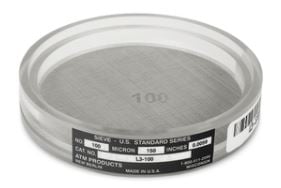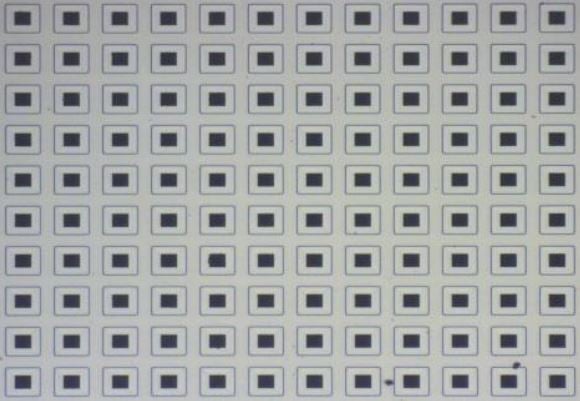How To Maintain an Electroformed Test Sieve
It is well known that with any particle analysis method that employs test sieves, the accuracy of the sieves screen pore openings is critical to the success of the entire process. As more materials fall under the designation of needing particle analysis to comply with industry standards, the particle range seen becomes vaster.
Now, this doesn't necessarily raise an issue for particles on the coarser side of the spectrum; however, the finer particles get the process of finding a suitable mesh screen becomes a little more tricky. To combat this obstacle, many turn to the accuracy found in electroformed test sieves.
While the use of these sieves allows the testing of fine particles, it does raise a separate list of techniques that you must incorporate that are separate from the techniques used when using standard test sieves. Of these techniques, the way in which you maintain your sieves stands as the most important.
If you currently use or are looking to invest in electroformed test sieves, this probably leaves you curious as to how they should be handled and maintained.
W.S. Tyler has helped customers find answers to their burning questions for 150 years and are eager to help you resolve this one.
We want you to feel confident that your electroformed sieves will last their expected lifespan with no lapse in performance. That'sThat's why by the end of this article, you will learn:
- What an electron test sieve is
- How you should maintain your electroformed test sieves
- What habits you should avoid when using electroformed test sieves
What Is an Electroform Test Sieve?
Test sieves are a particle size analysis instrument that employs a screening medium, such as perforated plater or woven wire mesh, to separate particles based on their size. The openings of these screening mediums can only be so fine, leaving operations that screen fine particles below 20 microns limited to what can be tested accurately.
 |
 |
Electroform test sieves work to combat the struggles faced when testing these fine particles. They are sieves designed to use an unsupported mesh screen to reach the finer openings below 20 microns while remaining compliant with industry standards.
How Should I Maintain My Electroform Test Sieve?
Because electroformed test sieves are much finer and delicate than standard test sieves, you must use extreme care when handling and maintaining them.
When cleaning your electroformed test sieves, a solution consisting of lukewarm water and a mild detergent should be used, holding the sieve vertically during the cleaning process. Once clean, you should rinse away the solution with distilled water, and the sieve should be set out to air dry.
After you have completed testing and the sieve must be stored, be sure to always place the sieve in its protective case.
What Should I Avoid When Maintaining My Electroform Test Sieves?
When cleaning the electroformed mesh screen of your test sieves, you must ensure test sieve brushes, forced air, or ultrasonic cleaner to remove residual particles and debris. These methods increase the chances of altering the integrity of the mesh openings, reducing the lifespan of the sieve significantly.
You should also make efforts not to expose your electroformed test sieves to radiant energy or temperatures that exceed 120F.
Additionally, you must never touch the screening of the electroformed test sieve with your hands or fingers. This is due to the fact that the acids and perspiration from your hand are proven to have the ability to damage the mesh.
NOTE: Your sample material, water, and a mild detergent should be the only things that physically touch the mesh screen of an electroformed test sieve.
Yield Accurate and Repeatable Results With a Properly Assembled Test Sieve Stack
Electroformed test sieves are sieves designed to facilitate particle analysis when testing particles finer than 20 microns. As the mesh screen used to construct these precision sieves are extremely delicate, you must only use a delicate cleaning solution between testing, avoiding the use of heat, forced air, and test sieve brushes.
But the way you handle your sieves is just one of many test sieve techniques that will affect the success of your results. Things such as how you assemble your test sieves will also have an integral impact on your results.
For 150 years, particle size analysis has been the bread and butter of W.S. Tyler. Our biggest concern is to help lab staff such as yourself identify and integrate the best practices needed to see an increase in efficiency throughout their process.
To help continue your journey to mastering your sonic sifter analysis process, we created the following article to provide insight into how a test sieve stack should be put together:
About Ronnie Brown
Ronnie is the Content Writer for W.S. Tyler and has four years of experience as a professional writer. He strives to expand his knowledge on all things particle analysis and woven wire mesh to leverage his exceptional writing and graphic design skills, creating a one-of-a-kind experience for customers.




